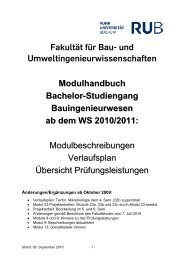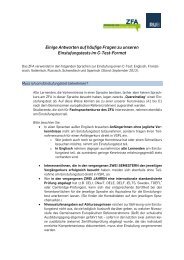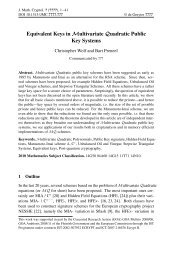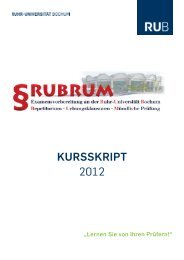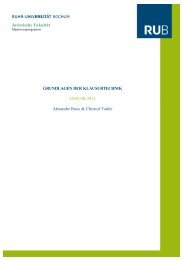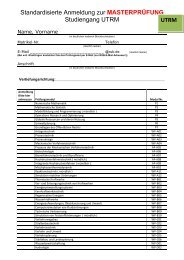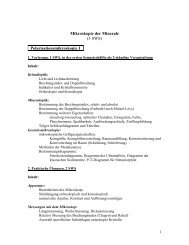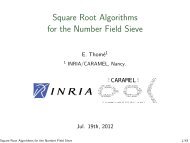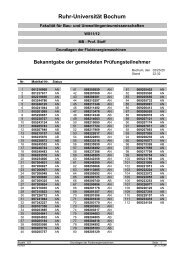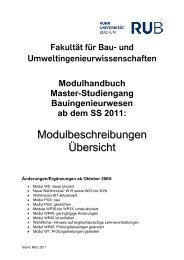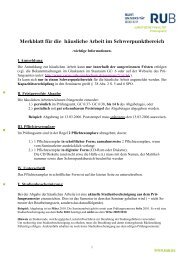Improved Information Set Decoding - Decoding Random Linear ...
Improved Information Set Decoding - Decoding Random Linear ...
Improved Information Set Decoding - Decoding Random Linear ...
You also want an ePaper? Increase the reach of your titles
YUMPU automatically turns print PDFs into web optimized ePapers that Google loves.
Recap Binary <strong>Linear</strong> Codes<br />
n<br />
A binary linear code C is a k-dimensional subspace of F<br />
●<br />
Running time of decoding algorithms: T(n,k,d)<br />
2<br />
●<br />
In<br />
● Generator this talk: Analysis<br />
matrix for random<br />
G k<br />
=<br />
0 binary / 1 linear<br />
C = { x t·G k<br />
: x 2 F 2<br />
}<br />
codes with constant rate R=k/n<br />
●<br />
For n→∞, k and d are related via Gilbert-<br />
n<br />
n-k<br />
n<br />
● Parity Varshamov check matrix bound, thus<br />
H = 0 / 1 C = { H·c = 0 : c 2 F 2<br />
}<br />
T(n,k,d) = T(n,k)<br />
●<br />
We compare algorithms by their complexity<br />
·<br />
y<br />
d<br />
Minimum coeffcient distance F(k), d i.e. = min c2C<br />
{ wt(c) }<br />
x<br />
· ·<br />
Such C is called binary T(n,k) [n,k,d] = O(2 code.<br />
F(k)n )<br />
n<br />
IMPROVED INFORMATION SET DECODING ASIACRYPT 2011 | December 2011, Seoul



